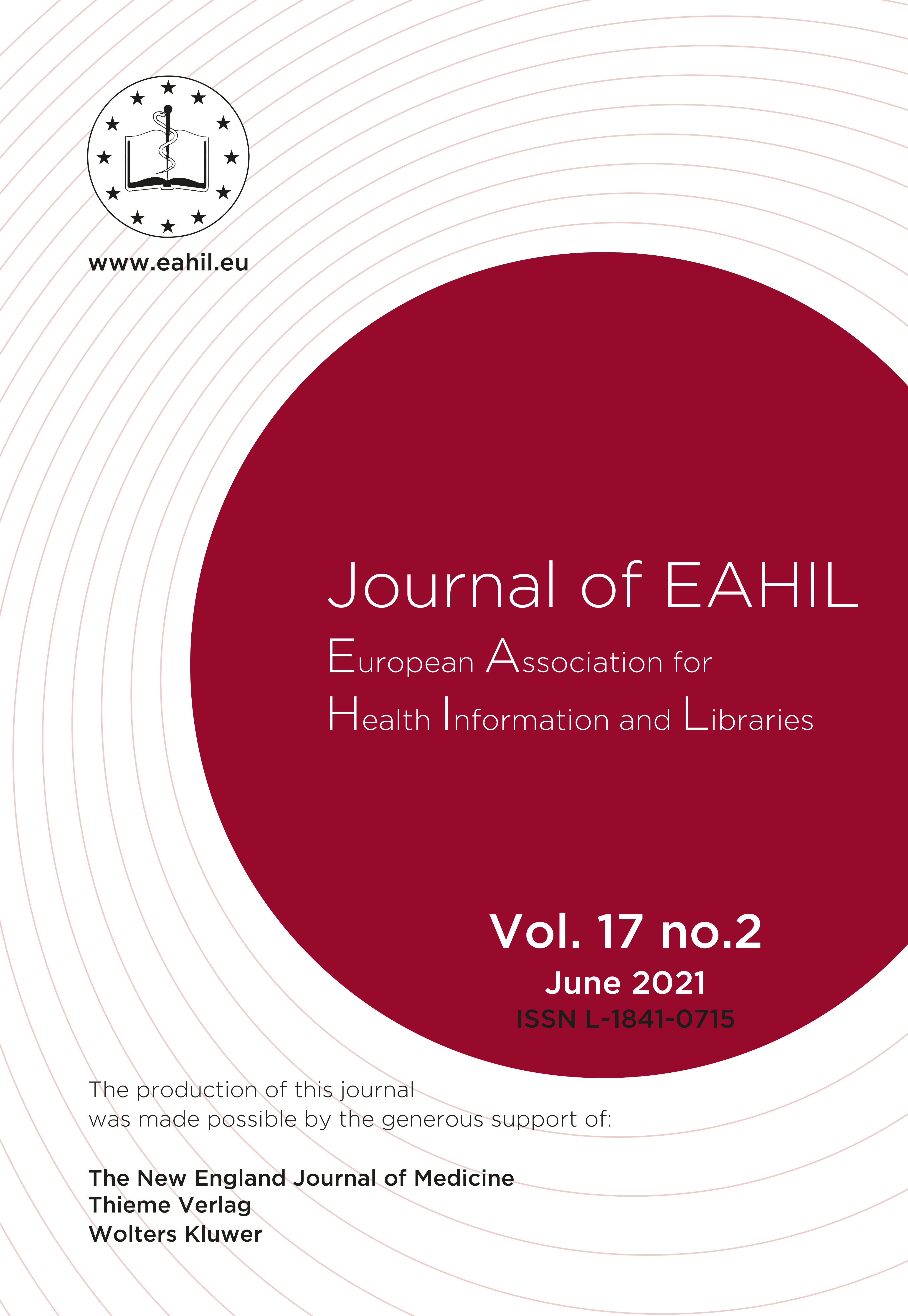Using automation to produce a ‘living map’ of the COVID-19 research literature
Main Article Content
Abstract
The COVID-19 pandemic has disrupted life worldwide and presented unique challenges in the health evidencesynthesis space. The urgent nature of the pandemic required extreme rapidity for keeping track of research, andthis presented a unique opportunity for long-proposed automation systems to be deployed and evaluated. Wecompared the use of novel automation technologies with conventional manual screening; and Microsoft AcademicGraph (MAG) with the MEDLINE and Embase databases locating the emerging research evidence. We foundthat a new workflow involving machine learning to identify relevant research in MAG achieved a much higherrecall with lower manual effort than using conventional approaches.
Article Details
How to Cite
1.
Using automation to produce a ‘living map’ of the COVID-19 research literature. J Eur Assoc Health Info Libr [Internet]. 2021 Jun. 23 [cited 2025 Dec. 14];17(2):11-5. Available from: https://ojs.eahil.eu/JEAHIL/article/view/469
Issue
Section
Feature Articles
JEAHIL is licensed under a Creative Commons Attribution 4.0 International (CC BY 4.0) licence, unless otherwise stated. Please read our Policies page for more information on Open Access, copyright and permissions.
How to Cite
1.
Using automation to produce a ‘living map’ of the COVID-19 research literature. J Eur Assoc Health Info Libr [Internet]. 2021 Jun. 23 [cited 2025 Dec. 14];17(2):11-5. Available from: https://ojs.eahil.eu/JEAHIL/article/view/469

